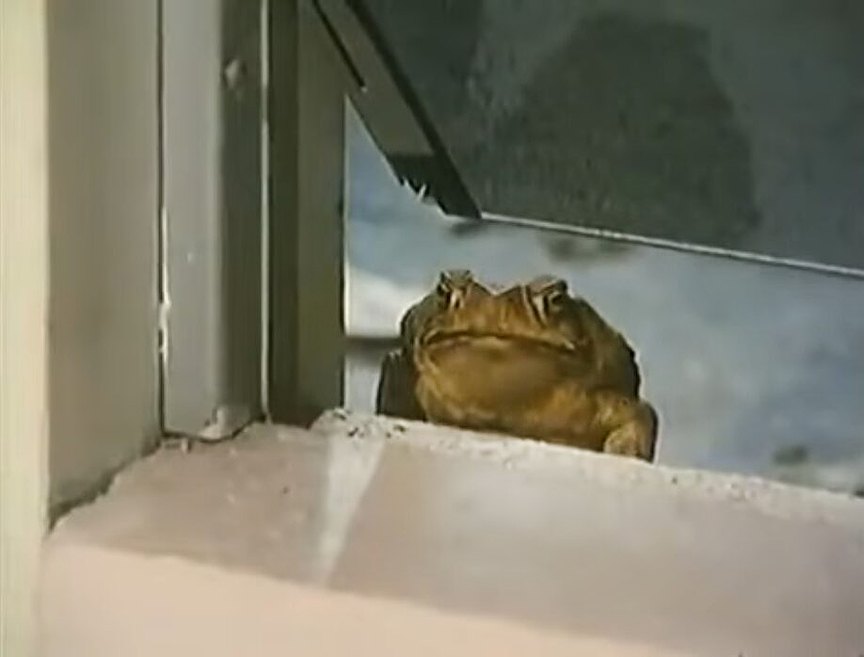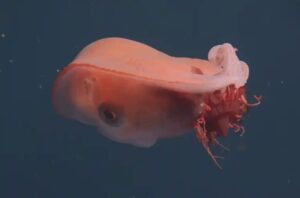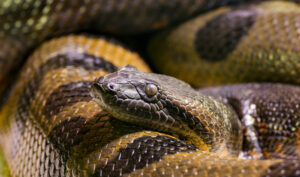Released in 1988, Cane Toads: An Unnatural History is an offbeat documentary about Australia’s invasive cane toad problem. Informative and thorough, it’s edited like a horror movie in some places and a comedy in others. And in some ways, it’s as much a people story as a toad story.
As text on screen informs us, the cane toad was introduced to Australia in the mid-1930s to control cane grubs, which were eating up the sugar crop. One hundred and two toads were snatched up from Hawaii and introduced to North Queensland.
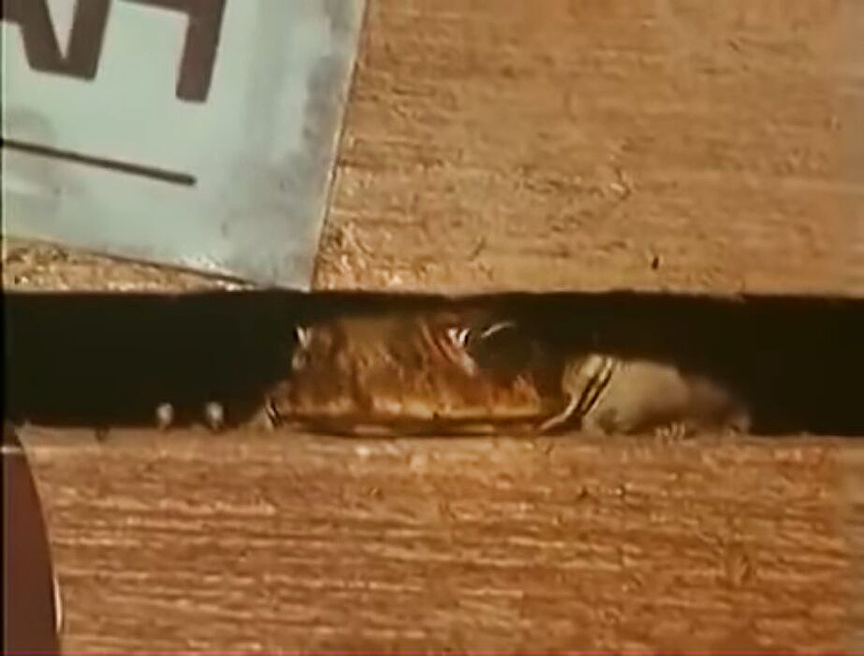
It took over two weeks for the toads to be railroaded — part of the way — from Hawaii to the sugar cane fields of Queensland. Photo: Screenshot
It was a classic “little old lady who swallowed the fly” gambit. In introducing the toads to tackle the grub problem, they created a whole new problem. The documentary explains this issue via a surprisingly detailed breakdown of toad mating practices and techniques.
Fifty years after their introduction, the waters are thick with cane toads. Bill Freeland, a wildlife officer, pulls out writhing handfuls of slick black tadpoles. Hearty little beasts, they are quick to develop legs and can thrive in slow, fast, clear, or brackish water.

In fact, I think they look a bit like boba pearls. Photo: Screenshot
The second plague
The rapid colonization of the toads was not without consequences. Perhaps worst of all, they didn’t even solve the original grub problem. The grubs and the toads were in the cane fields at different times, meaning they never intersected. The toads did, one farmer explains, kill a great deal of stray dogs. See, cane toads have a poisonous sack, which makes them a potentially deadly foodstuff.
In 1945, cane farmers brought new pesticides to bear against the grubs, resolving the initial problem. The toads continued to proliferate, covering most of Queensland and into New South Wales. And yet, by their ubiquity, they seem to have earned themselves widespread affection. One interviewee — a self-serious intellectual trying to interpret the cultural moment — calls it a “perverted reverence.”
The documentary introduces us to charming old people who call the toads their “mates” and put out food for them. Later, we’ll meet a young girl who keeps a very large cane toad as a pet, treating it like a doll. One man says he gives them cigarettes, which they apparently enjoy. There was even an attempt to erect a cane toad statue in Gordonvale.

Sadly, the cane toad statue was never actually built. Photo: Screenshot
Bufotoxin and bad habits
The cane toads aren’t “mates” to anything that tries to eat them. As the stray dogs discovered, cane toads possess a powerful bufotoxin. When the glands in their backs are pressed, they expel this toxin, sometimes with impressive force and distance.
We are introduced to Dr. Michael Archer, a zoologist whose pet and study subject, a cat-like marsupial called a quoll, died after biting a cane toad. Archer, Captain Ahab-like, vows revenge against the cane toad. This led him to hit one with a pick, whereupon poison squirted right in his eye, temporarily blinding him.
The toads are also voracious and indiscriminate eaters. As Archer explains with obvious detestation in his voice, they’ve been found with small native marsupials in their stomachs. Larger native animals die from trying to eat the toads or being out-competed.
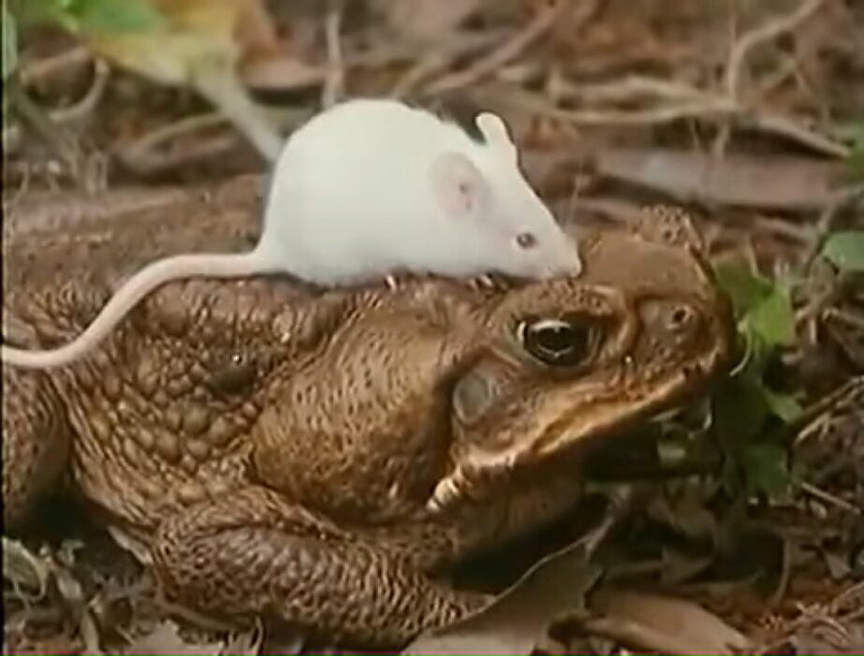
This mouse is in grave danger. Photo: Screenshot
Another biologist, perhaps getting caught up in the moment and going a tad far, claims the cane toad invasion is just as dangerous as “the German army in World War II.”
Several decades on, the cane toads have continued to spread. But the documentary isn’t just a charming relic; its exploration of the complex relationship between human populations and invasive species remains relevant. It’s also great if you want to see a human scientist imitate a toad’s mating call with frightening accuracy.
